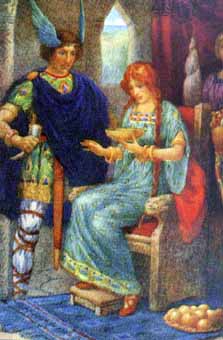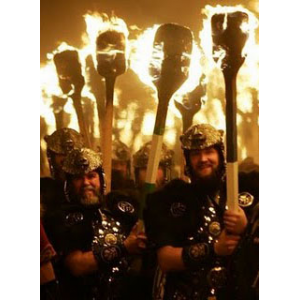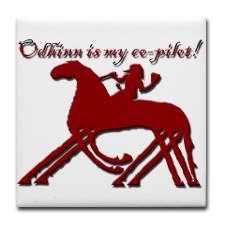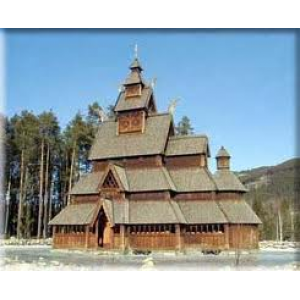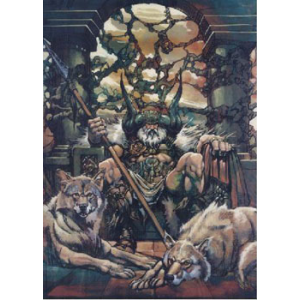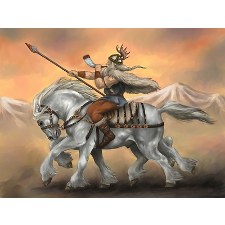
As the road was rough and painful in the extreme, none of the Gods at first volunteered to go; but when Frigga added that she and Odin would reward the messenger by loving him most of all the ?sir, Hermod signified his readiness to execute the commission. To help him on his way, Odin lent him Sleipnir, and bade him good speed, while he motioned to the other Gods to carry the corpse to Breidablik, and directed them to go to the forest and cut down huge pines to make a worthy pyre for his son.
“But when the Gods were to the forest gone,
Hermod led Sleipnir from Valhalla forth
And saddled him; before that, Sleipnir brook’d
No meaner hand than Odin’s on his mane,
On his broad back no lesser rider bore;
Yet docile now he stood at Hermod’s side,
Arching his neck, and glad to be bestrode,
Knowing the God they went to seek, how dear.
But Hermod mounted him, and sadly fared
In silence up the dark untravel’d road
Which branches from the north of Heaven, and went
All day; and daylight waned, and night came on.
And all that night he rode, and journey’d so,
Nine days, nine nights, toward the northern ice,
Through valleys deep-engulph’d by roaring streams.
And on the tenth morn he beheld the bridge
Which spans
With Golden arches Giall’s stream,
And on the bridge a damsel watching, arm’d,
In the straight passage, at the further end,
Where the road issues between walling rocks.”
-BALDER DEAD (Matthew Arnold)
While Hermod was traveling along the cheerless road to Niflheim, the Gods hewed and carried down to the shore a vast amount of fuel, which they placed upon the deck of Balder’s favorite vessel, Ringhorn,
Constructing an elaborate funeral pyre, which,
According to custom, was decorated with tapestry hangings, garlands of flowers, vessels and weapons of all kinds, golden rings, and countless objects of value, ere the immaculate corpse was brought and laid upon it in full attire.
One by one, the Gods now drew near to take a last farewell of their beloved companion, and as Nanna bent over him, her loving heart broke, and she fell lifeless by his side. Seeing this, the Gods reverently laid her beside her husband, that she might accompany him even in death; and after they had slain his horse and hounds and twined the pyre with thorns, the emblems of sleep, Odin, the last of the Gods, drew near.
Books in PDF format to read:
Sir William Stirling Maxwell - The CanonTuesday Lobsang Rampa - The Third EyeAleister Crowley - The Diary Of A Drug FiendMorwyn - The Golden Dawn



